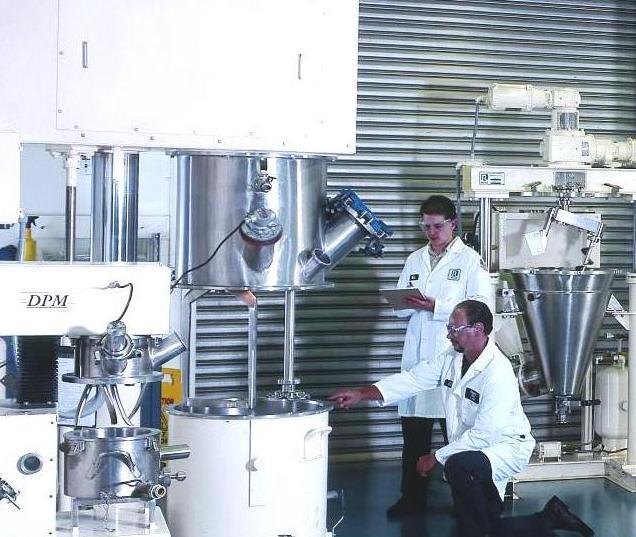Tech Report
5 ways to reduce labor costs in your mixing operation

Technology Brief
Labor costs account for a significant portion of mixing costs. This bulletin presents five basic tips for optimizing labor costs and improving productivity in the mixing operation.
The cost of mixing
When done efficiently, mixing normally constitutes only a minor percentage of the total manufacturing cost. Inefficient mixing, on the other hand, can be an expensive operation that could hurt the bottom line. Lost value due to low yield, product contamination, corrections and reworks, prolonged cycle times and intensive clean-up should not be overlooked. On the balance sheets, these translate to increased use of raw materials and energy but more significantly, they lead to higher labor costs.
Tips for cost-effective mixing
Below are some considerations for specifying a ribbon blender that will best suit your particular process.
- Equip your process with the right mixer. The choices can be overwhelming but an experienced mixer supplier can help narrow down your list to no more than two or three best candidates. Test these mixers using your own raw materials and simulating your process conditions. A proof-of-concept mixing demonstration will determine if you can combine two or more steps in one mixer. Once you have zoned in on a particular design, rent the mixer for further testing in your facility, if practical. This exercise will help you perfect the order and method of raw material additions, as well as jumpstart operator training. Ensuring that you have the right equipment and process in place is the first step to optimizing labor costs.
- Re-evaluate your batch size as production expands. Many process engineers answer the call for greater capacity by simply adding more mixers identical to the ones they already have. This strategy increases production but may fail to capture economies of scale. With every square foot of floor space occupied by numerous small mixers, the associated labor costs also go up when they really don`t need to if only a larger mixer is used instead. Minimize the frequency of mixing and cleaning cycles in order to hit production targets while avoiding costly overtime.
- Another strategy is to consider if semi-continuous mixing is appropriate for your process. For example, many mixing systems up to 500-gallon capacities can be supplied in a "change-can" design. Using interchangeable multiple vessels with a single mixer, one mix can could be at the loading stage, another under the mixer, another at the discharge step and yet another at the clean-up stage. This arrangement maximizes both machine and labor utilization.
- A well-specified control system helps ensure consistent product quality, shorter changeover periods and lesser room for operator errors. Invest in PLC operator controls and seamlessly integrate mix time, agitator speeds, temperature, batch level/weight, vacuum level, etc. into any recipe or mix cycle. If end product quality is checked for viscosity and density, you can substantially cut testing time by pumping the mixture through a recirculation line equipped with viscosity and density transmitters to quickly verify that the batch is complete and within spec.
- Simplify discharge and cleaning. Viscous mixtures are most notorious for consuming extended amounts of man hours dedicated just to discharge and clean-up. An automated discharge system can tremendously reduce labor costs by accelerating product transfer and at the same time preparing the mix vessel for easy clean-up.
Sample Application: Hydrocolloid Adhesives

Various-size Ross Sanitary Double Planetary Mixers and Discharge Systems are being used by a major supplier to the health care industry to produce hydrogel adhesives for sterile wound dressings.
Liquid ingredients are charged to the heated mix vessel and, with the planetary blades engaged, hydroxylpropyl guar gum and polyvinylpyrrolidone (PVP) powders are added through a charge port.The finished batch is a sticky gel substance with a springy characteristic.
The mix vessel is removed from under the mixer and rolled to the Ross Discharge System. The operator lubricates the exposed sidewalls with a small amount of the liquid vehicle before lowering the discharge platen. Virtually all of the product is forced out through a flush plug valve. The very thin layer of gel remaining on the vessel bottom is quickly cleaned by hand. A plasma coating applied to the contact parts of the discharge platen allows for easier product release and enhanced cleanability.